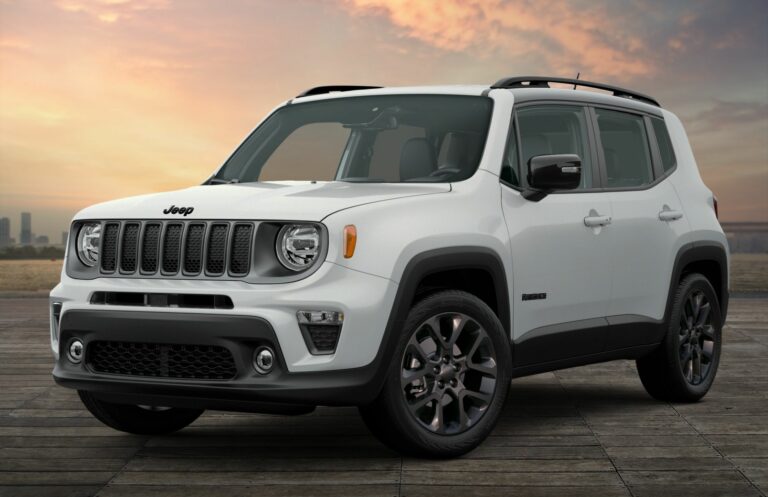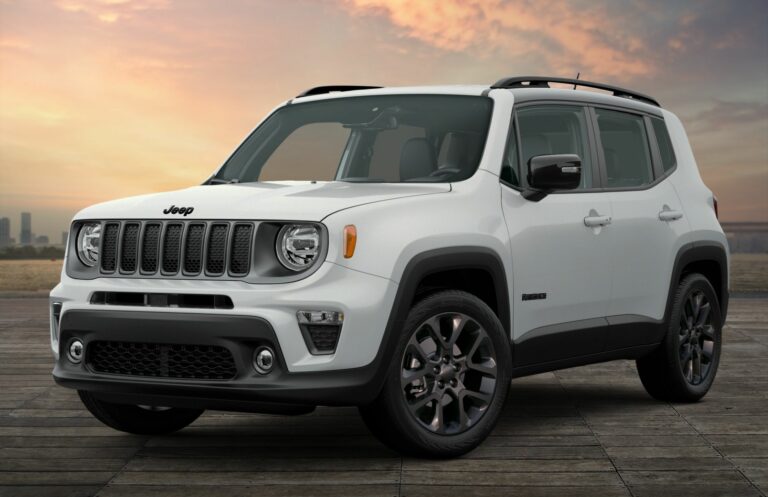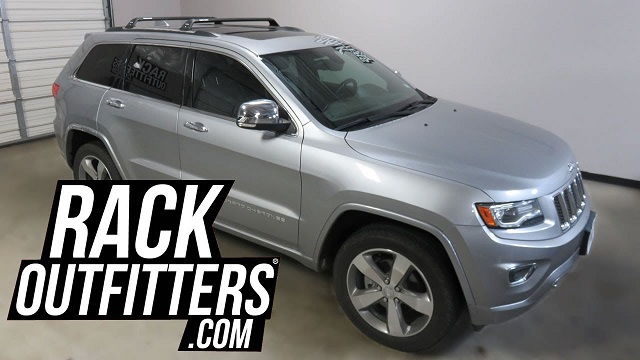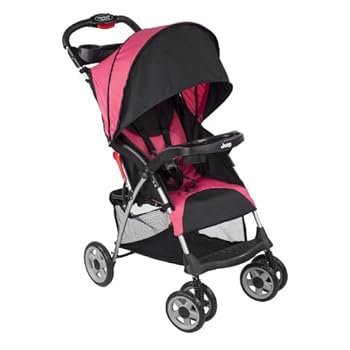Jeep Wrangler 2 Door 1999: An Enduring Icon of Off-Road Freedom
Jeep Wrangler 2 Door 1999: An Enduring Icon of Off-Road Freedom jeeps.truckstrend.com
Introduction: The Unyielding Spirit of the 1999 Jeep Wrangler 2-Door
In the pantheon of iconic automobiles, few vehicles command the same reverence and recognition as the Jeep Wrangler. More than just a car, it’s a symbol of adventure, capability, and unwavering freedom. Among its storied lineage, the 1999 Jeep Wrangler 2-Door, belonging to the TJ generation (1997-2006), holds a special place in the hearts of enthusiasts and off-roaders alike. This particular model year represents a sweet spot in the Wrangler’s evolution, retaining the rugged simplicity that defines the brand while incorporating crucial refinements that made it more comfortable and capable than its predecessors.
Jeep Wrangler 2 Door 1999: An Enduring Icon of Off-Road Freedom
The 1999 TJ Wrangler is not merely a vehicle; it’s a statement. It embodies a philosophy of open-air exhilaration, go-anywhere capability, and a robust aftermarket presence that allows owners to tailor it precisely to their needs. For many, it’s the quintessential Jeep – a perfect blend of analog charm and modern reliability. This comprehensive guide will delve deep into what makes the 1999 Jeep Wrangler 2-Door a cherished classic, exploring its specifications, ownership considerations, and its enduring appeal in today’s automotive landscape.
I. The TJ Era: A Refined Icon (1997-2006)
The TJ generation of the Jeep Wrangler marked a significant leap forward from its YJ predecessor (1987-1995). While maintaining the iconic round headlights and seven-slot grille, the most transformative change in the TJ was the adoption of coil-spring suspension at all four corners, replacing the leaf springs of previous generations. This single modification dramatically improved the Wrangler’s on-road ride comfort and off-road articulation, making it a more versatile and enjoyable vehicle without sacrificing its legendary toughness.
The 1999 model year, situated firmly in the middle of the TJ’s production run, benefited from the initial refinements while preceding some of the later, less desirable changes (like the "new" 2.4L engine option introduced later in the generation). It retained the beloved 4.0L inline-six engine and offered a robust platform that enthusiasts quickly embraced for its balance of capability and everyday usability. It was, and remains, a testament to Jeep’s commitment to delivering a truly authentic off-road experience.
II. Core Specifications and Powertrain
At the heart of the 1999 Jeep Wrangler 2-Door’s legendary performance are its robust powertrain options and well-engineered chassis.
- Engine Options:

- 2.5L AMC I4 (Inline 4-cylinder): Standard in the base SE model, this engine produced approximately 120 horsepower and 140 lb-ft of torque. While adequate for light duty and trail crawling, it often felt underpowered, especially with larger tires or on highway commutes.
- 4.0L AMC I6 (Inline 6-cylinder): The undisputed king of TJ engines, this powerhouse delivered around 181 horsepower and 222 lb-ft of torque. Renowned for its low-end torque, bulletproof reliability, and longevity, the 4.0L is highly sought after and makes the 1999 Wrangler a far more capable and enjoyable vehicle for both on-road driving and serious off-roading.
- Transmission Options:

- Manual: A 5-speed manual transmission (AX-5 for 2.5L, AX-15 for 4.0L) was standard, offering direct engagement and control, favored by many off-roaders.
- Automatic: A 3-speed automatic (32RH) was available for the 2.5L, and a more desirable 4-speed automatic (42RE) was an option for the 4.0L, providing smoother shifts and better highway manners.
- Transfer Case: The Command-Trac NV231 part-time 4WD transfer case was standard, offering 2H, 4H, and 4L modes, providing excellent traction in various off-road conditions.
- Axles:
- Front: Dana 30 solid axle was standard across all trims.
- Rear: Dana 35c (conventional) was standard. However, the more robust and desirable Dana 44 rear axle was an option on Sport and Sahara models, particularly beneficial for those planning significant modifications or aggressive off-roading.
- Dimensions: With a wheelbase of 93.4 inches and a relatively narrow track, the 2-door TJ is incredibly nimble and boasts excellent break-over angles, making it highly effective on tight trails.

III. Trim Levels and Features of the 1999 Model
The 1999 Jeep Wrangler 2-Door was offered in several trim levels, each catering to different budgets and preferences:
- SE: This was the base model, typically equipped with the 2.5L four-cylinder engine. It featured steel wheels, a basic interior, and limited creature comforts. It was the most affordable entry point into Wrangler ownership, often chosen by those who planned extensive modifications.
- Sport: A step up from the SE, the Sport trim made the 4.0L inline-six engine standard. It offered more standard features like full doors, a soft top, and optional air conditioning, cruise control, and a CD player. The Sport was a popular choice, striking a good balance between capability and everyday comfort. It also offered the optional Dana 44 rear axle.
- Sahara: The top-tier trim, the Sahara, came standard with the 4.0L engine and added a touch of luxury and distinct styling. Key features included body-colored fender flares, unique alloy wheels, premium cloth seats (often with "Sahara" embroidery), upgraded sound system, fog lights, and a standard hard top or premium soft top. The Dana 44 rear axle was frequently included or a common option on Sahara models, making them highly desirable for their blend of features and capability.
All trims offered removable doors, a fold-down windshield, and various soft top and hard top configurations, truly embodying the open-air Jeep experience.
IV. The Driving Experience: On-Road and Off-Road
The 1999 Jeep Wrangler 2-Door offers a distinct driving experience that sets it apart from modern SUVs.
- On-Road: Thanks to its coil-spring suspension, the TJ provides a significantly more refined ride than its leaf-sprung predecessors. However, it’s still a Wrangler. It’s not a highway cruiser designed for quiet comfort. Wind noise, especially with the soft top, is noticeable, and the short wheelbase can make it feel a bit "jittery" at higher speeds. Steering can be somewhat vague, and body roll is present in corners. That said, for those who appreciate a raw, connected driving experience, the TJ delivers. It’s a vehicle that constantly reminds you of its mechanical nature, which is part of its charm.
- Off-Road: This is where the 1999 Wrangler truly shines. Its compact dimensions, excellent ground clearance, short wheelbase, and robust solid axles make it an incredibly capable off-road machine right out of the factory. The legendary 4.0L engine provides ample torque for crawling over obstacles, and the Command-Trac transfer case offers reliable 4WD engagement. Whether tackling rocky trails, muddy ruts, or sandy dunes, the TJ Wrangler feels utterly at home. Its simplicity also means fewer complex electronic systems to fail when submerged or battered, making it a favorite for serious enthusiasts. The vast aftermarket support further enhances its off-road prowess, allowing owners to customize it for extreme conditions.
V. Ownership Considerations: What to Look For (Buying Guide)
Purchasing a 1999 Jeep Wrangler today means buying a 25-year-old vehicle. A thorough inspection is paramount.
-
Common Issues and Weak Points:
- Rust: This is the biggest enemy of older Wranglers. Inspect the frame meticulously, especially around the control arm mounts, skid plates, and suspension mounts. Also check the floorboards, rocker panels, rear quarter panels, and behind the fender flares. Rust can compromise structural integrity and be expensive to repair.
- Oil Pump Drive Assembly (OPDA): Specific to 4.0L engines from 1997-2004, the OPDA can wear prematurely, causing engine noise and potentially damage. Listen for ticking or tapping noises from the top of the engine. Replacement is a common preventative measure.
- Rear Main Seal Leaks: Common on the 4.0L, often appearing as oil drips from the bell housing. While usually not severe, it indicates an older seal.
- Cooling System: Radiators, water pumps, and thermostats are wear items. Check for leaks, overheating issues, and coolant color.
- Steering and Suspension Components: Worn ball joints, tie rod ends, track bar bushings, and control arm bushings can lead to loose steering, wandering, or the dreaded "death wobble" (a violent, uncontrollable shaking of the front end at speed).
- Electrical Gremlins: Older wiring can lead to issues with gauges, lights, or accessories.
- Soft Top/Hard Top Condition: Inspect for rips, tears, cloudy windows on soft tops, and cracks or leaks on hard tops. These are expensive to replace.
- Previous Modifications: While modifications are common, poorly installed lift kits, oversized tires without re-gearing, or shoddy wiring can cause problems. Look for quality components and professional installation.
-
Pre-Purchase Inspection: Always get a pre-purchase inspection by a trusted mechanic familiar with Jeeps. They can spot issues that a casual observer might miss.
-
Maintenance Records: Ask for any available service history to gauge how well the vehicle has been maintained.
VI. Customization and Aftermarket Support
One of the most compelling aspects of owning a 1999 Jeep Wrangler 2-Door is the unparalleled aftermarket support. The TJ platform is a blank canvas for customization, allowing owners to tailor their vehicle for specific off-road needs or aesthetic preferences.
- Popular Modifications:
- Suspension Lifts: Ranging from mild 2-inch lifts for larger tires to extreme 6-inch+ kits for serious rock crawling.
- Larger Tires: Increasing ground clearance and traction.
- Bumpers and Armor: Steel bumpers, rock sliders, and skid plates protect the vehicle during aggressive off-roading.
- Winch: An essential recovery tool for off-road adventures.
- Re-gearing: Changing differential gear ratios to compensate for larger tires and restore lost power.
- Lockers: Installing locking differentials for maximum traction in challenging terrain.
- Community: The Jeep community is vibrant and supportive. Owners frequently share knowledge, parts, and trail experiences, making ownership an even richer experience.
VII. Why the 1999 TJ Remains Relevant Today
Despite its age, the 1999 Jeep Wrangler 2-Door continues to be a highly sought-after vehicle for several reasons:
- Simplicity and Maintainability: Compared to modern, electronics-laden vehicles, the TJ is relatively simple. This translates to easier and often cheaper repairs, making it an excellent choice for DIY mechanics.
- Analog Driving Experience: In an era of autonomous features and digital interfaces, the TJ offers a raw, engaging, and connected driving experience that many enthusiasts crave.
- Unrivaled Off-Road Prowess: Few vehicles can match the TJ’s out-of-the-box off-road capability, especially when equipped with the 4.0L engine.
- Value Retention: Well-maintained TJs, particularly those with the 4.0L engine, tend to hold their value remarkably well, often appreciating in certain markets.
- Nostalgia and Iconic Status: For many, it represents the "last of the simple Jeeps," embodying the rugged spirit of the original Willys MB.
Practical Advice and Actionable Insights
For anyone considering a 1999 Jeep Wrangler 2-Door:
- Prioritize Condition Over Mileage: A well-maintained high-mileage TJ is often a better buy than a low-mileage one that has been neglected or heavily abused off-road without proper upkeep.
- Budget for Maintenance: Even a well-cared-for 25-year-old vehicle will require ongoing maintenance and occasional repairs. Factor this into your budget.
- Understand Its Limitations: While capable, the TJ is not a luxury SUV. Be prepared for a louder, rougher, and less fuel-efficient ride than modern vehicles.
- Embrace the Community: Join online forums, local Jeep clubs, and attend events. The community is an invaluable resource for advice, parts, and camaraderie.
- Consider Your Use Case: If you primarily drive on highways, a TJ might be frustrating. If you dream of trails and open-air adventures, it’s perfect.
Conclusion: The Timeless Appeal of the 1999 Jeep Wrangler 2-Door
The 1999 Jeep Wrangler 2-Door stands as a testament to timeless design and enduring capability. It perfectly encapsulates the spirit of the Jeep brand, offering a unique blend of ruggedness, simplicity, and unparalleled off-road prowess. For enthusiasts, it represents a sweet spot in the Wrangler’s evolution – refined enough for modern use, yet pure enough to deliver an authentic, engaging driving experience. Its robust build, legendary 4.0L engine, and vast aftermarket support ensure that this iconic vehicle will continue to conquer trails and turn heads for decades to come. Owning a 1999 TJ is more than just owning a vehicle; it’s buying into a lifestyle of adventure, freedom, and a vibrant community.
Price Table: 1999 Jeep Wrangler 2 Door
| Feature / Trim Level | SE (Base) | Sport | Sahara |
|---|---|---|---|
| Original MSRP (Approx.) | $14,000 – $17,000 | $17,500 – $21,000 | $20,000 – $24,000 |
| Current Used Market Value (2024) | |||
| Fair Condition | $5,000 – $8,000 | $7,000 – $11,000 | $9,000 – $13,000 |
| Good Condition | $8,000 – $12,000 | $11,000 – $16,000 | $13,000 – $18,000 |
| Excellent Condition (Low Miles, Rust-Free) | $12,000 – $15,000+ | $16,000 – $22,000+ | $18,000 – $25,000+ |
| Standard Engine | 2.5L I4 (120 hp) | 4.0L I6 (181 hp) | 4.0L I6 (181 hp) |
| Standard Transmission | 5-speed Manual (AX-5) | 5-speed Manual (AX-15) | 5-speed Manual (AX-15) |
| Optional Transmission | 3-speed Automatic (32RH) | 4-speed Automatic (42RE) | 4-speed Automatic (42RE) |
| Key Features | Basic interior, steel wheels, soft top. | Full doors, optional AC/Cruise, CD player. | Body-colored flares, premium interior, fog lights, standard/premium soft top or hard top. |
| Optional Rear Axle | Dana 35c | Dana 44 (highly desirable for off-roaders) | Dana 44 (often included or common option) |
| Target Buyer | Budget-conscious, heavy modifiers. | General enthusiast, balanced performance/comfort. | Premium features, higher resale, off-road capable. |
Note: Prices are approximate and can vary significantly based on mileage, condition, modifications, region, and demand. Rust-free examples with the 4.0L engine and Dana 44 axle command the highest values.
Frequently Asked Questions (FAQ) about the 1999 Jeep Wrangler 2-Door
Q1: Is the 1999 Jeep Wrangler a good daily driver?
A1: It can be, but it’s not ideal for everyone. It’s louder, less fuel-efficient, and less comfortable on long highway trips than modern vehicles. However, for short commutes or as a secondary vehicle, many owners find its character and open-air experience enjoyable for daily use.
Q2: Which engine is better, the 2.5L or the 4.0L?
A2: For most buyers, the 4.0L inline-six is vastly superior. It offers significantly more power and torque, making the Wrangler much more capable on the highway and off-road, especially if you plan to install larger tires. The 2.5L is generally only recommended if you have a strict budget or plan to re-power the vehicle.
Q3: What is "death wobble" and how do I fix it?
A3: "Death wobble" is a violent, uncontrollable shaking of the front end that occurs at certain speeds (usually 45-60 mph) after hitting a bump. It’s not unique to Jeeps but is common in solid-axle vehicles with worn steering and suspension components. It’s typically caused by a combination of loose or worn parts like the track bar, tie rod ends, ball joints, or steering stabilizer. Fixing it usually involves diagnosing and replacing the worn components, ensuring proper alignment, and sometimes upgrading the steering stabilizer.
Q4: Are parts for the 1999 Wrangler hard to find?
A4: No, quite the opposite! The TJ generation is extremely popular, and there is a massive aftermarket for parts, upgrades, and replacement components. Most parts are readily available from Jeep dealerships, auto parts stores, and numerous online retailers specializing in Jeep accessories.
Q5: Can the 1999 Wrangler go off-road in stock form?
A5: Absolutely! Even in stock form, the 1999 Jeep Wrangler with its short wheelbase, high ground clearance, and robust 4×4 system is incredibly capable off-road. Its solid axles and coil spring suspension provide excellent articulation. While modifications can enhance its capabilities, it’s ready for moderate trails right out of the factory.
Q6: What’s the best trim level to buy?
A6: The Sport and Sahara trims with the 4.0L engine are generally the most desirable. The Sport offers a great balance of features and capability, while the Sahara adds more creature comforts and styling. If you can find a Sport or Sahara with the optional Dana 44 rear axle, that’s an added bonus for serious off-roaders. The SE is best if you’re on a tight budget and don’t mind the 2.5L engine or plan an engine swap.




